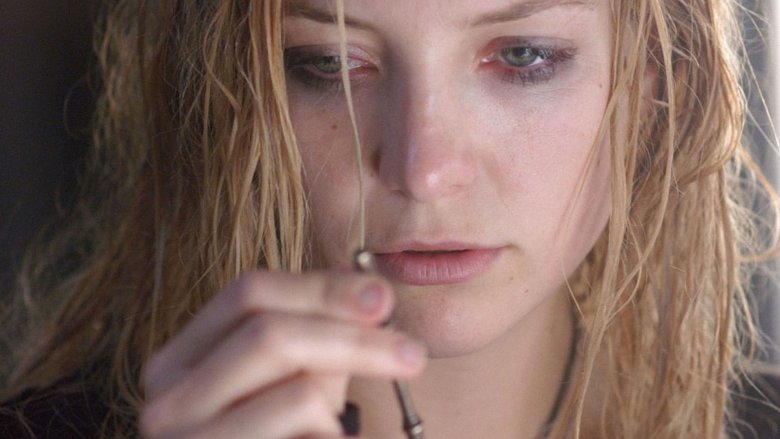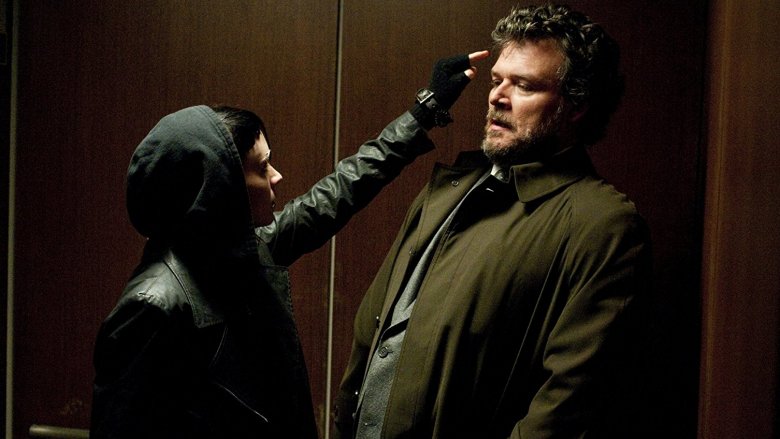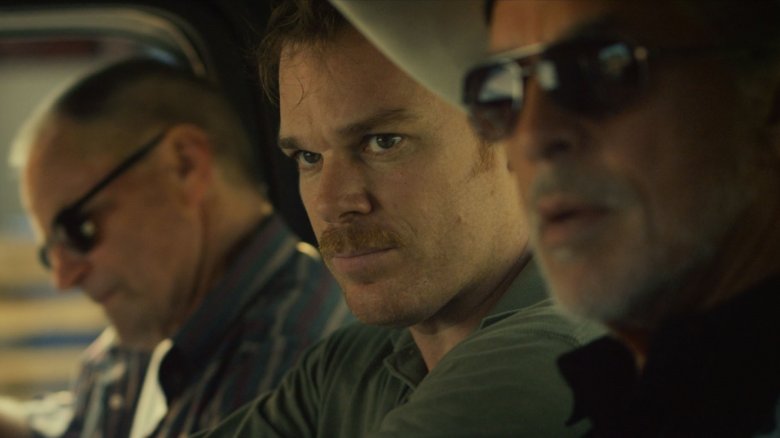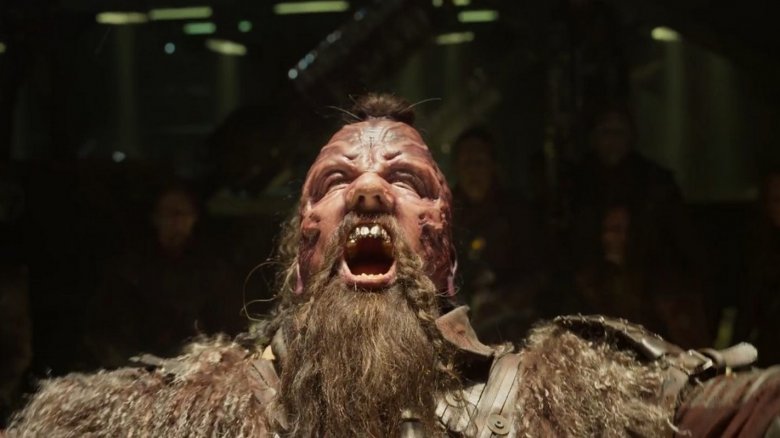Disturbing Movie Scenes You Never Saw Coming
Some movies wash over you and are forgotten the next day. But others stick in your mind for months or maybe even years, and that's usually due to a shocking or disturbing scene. From creepy-crawly parasites to sci-fi space mutinies, we've collected some of the most troubling movie moments in recent memory, if you have the stomach for them. Be warned, though, there are spoilers below.
Alien (1979) – The chestburster
With its dripping mouth and phallic head, the xenomorph is pure nightmare fuel, and every time it pops up in Ridley Scott's Alien, you know something terrible is about to happen. It stalks Dallas through the air ducts, makes short work of Brett and Parker, and does something truly awful to Lambert off-screen. But if you're looking for something that'll scar you for life, then it doesn't get any worse than the chestburster scene.
After stumbling into a pit full of leathery eggs, executive officer Kane (John Hurt) winds up with a facehugger attached to his head. And when the crew tries to remove the eight-legged monster, this nasty beast wraps its tail around Kane's throat, refusing to let go. Yeah, it's pretty sickening, but it only gets more disturbing from there. After the facehugger eventually falls off, Kane wakes up, and everything seems okay, until he starts suffering from the worst heartburn in history.
As Kane convulses on the table, his comrades gather around, trying to save his life ... and that's when Kane's chest explodes, revealing a blood-soaked parasite. Naturally, the rest of the crew are completely freaked out, and some of the terror you see on-screen is real. The actors knew the chestburster was going to emerge, but they didn't know what it would look like, how it would happen, or how much gore was going to be involved. So when the worm from hell scampers off, you can tell the actors are experiencing some pretty serious nausea, just like the rest of us watching from home.
Star Trek II: The Wrath of Khan (1982) – The Ceti eels
Created by Gene Roddenberry, Star Trek was a show about unity, harmony, and working together for the good of mankind. In other words, it wasn't what you'd call edgy, but that all changed with The Wrath of Khan and the introduction of the dreaded Ceti eel.
The nasty stuff starts when Captain Terrell (Paul Winfield) and everybody's favorite Russian, Chekov (Walter Koenig), land on a mysterious desert planet and run straight into Khan Noonien Singh (Ricardo Montalban). A genetic superhuman with a fondness for Moby Dick, Khan wants revenge against Captain Kirk (William Shatner) for abandoning him on this barren wasteland. As part of his nefarious plan, Khan forces Terrell and Chekov to become his spies with the help of the Ceti eel, a creature that enters the brain and basically turns you into a mindless slave ... before driving you mad and killing you.
But first, this segmented parasite has to crawl through your ear, and we're left squirming in our seats as the eel inches its way toward Chekov's ear canal. This disturbing sequence was unlike anything else in Star Trek history, and it was all thanks to producer Robert Sallin who spotted a slug one day and wondered, "What if that slimy thing was able to get into the ear?" Well, it would freak out an entire generation of wide-eyed Trekkies, that's what.
The Vanishing (1988) – What happened to Saskia
The ending of The Vanishing isn't completely unexpected. We know something bad is going to happen, but we don't know exactly what. The whole movie has been building toward this moment, when our main character finally confronts the big bad guy. But instead of getting an epic showdown, we're given a simple conversation, a diabolical decision, and one of the freakiest finales ever put to film. In fact, it's so upsetting that Bravo ranked it as the 55th scariest movie scene of all-time.
The plot follows a man named Rex (Gene Bervoets) who's trying to figure out what happened to his girlfriend, Saskia (Johanna ter Steege). She vanished three years ago, and ever since, Rex has been desperately searching for answers. At this point, he's actually more interested in satisfying his curiosity than finding Saskia (he knows she's probably dead), and his quest eventually leads him to Raymond (Bernard-Pierre Donnadieu), a mild-mannered monster with a dreadful proposition.
Raymond admits to kidnapping Saskia, but says if Rex wants to know what happened to her, he'll have to experience her fate firsthand. It seems like a pretty rotten deal, but Rex is driven by an insatiable need to know, so he downs a sleeping pill and wakes up inside a coffin, buried beneath the earth. He's wide-eyed with terror as he screams for help, but no one is coming, and in a gut-punch finale, he's left to die underground. But hey, at least he found his answer.
Primal Fear (1996) – Aaron's confession
Edward Norton has a thing for movies with twist endings. A few years before starting a fight club, he was making his film debut as Aaron Stampler, a troubled altar boy in Primal Fear. This thriller finds Aaron accused of killing the Chicago archbishop, a high-profile case that draws the attention of Martin Vail (Richard Gere). Vail is a smarmy lawyer who hopes to get some big-time publicity by defending the soft-spoken stutterer, but as he dives deeper into the case, Vail realizes that Aaron has suffered years of abuse at the hands of the archbishop, causing him to develop a new personality—the violent and dangerous Roy.
Roy admits to the murder, but Vail realizes that Aaron is the victim here, not a villain. So our hero uses his expert legal skills to save the young man's life and have him committed to a mental institution. But then, in the last few minutes, we learn something upsetting about our boy Aaron. Throughout the film, we learn that after Roy takes over, Aaron can't remember anything that happens. However, when Aaron has one last conversation with his attorney, he accidentally mentions something only Roy would know. When Vail confronts his client about the slip-up, Aaron reveals the split personality scheme was one big hoax.
In fact, it turns out that sweet-and-simple Aaron was a fake person, and sociopathic Roy was the real deal the entire time. And now he's gotten away with murder–not only did he kill the archbishop, but he butchered a fellow abuse victim. When Richard Gere walks away stunned, we're all feeling the exact same way.
The Royal Tenenbaums (2001) – Richie's suicide attempt
When watching a Wes Anderson movie, you totally expect some tragedy mixed in with the quirky comedy, but every so often, Anderson slips in some pretty disturbing stuff. There's the shocking river sequence from The Darjeeling Limited and the grisly finger scene from The Grand Budapest Hotel, but Anderson's most unsettling moment comes in The Royal Tenenbaums, when Richie Tenenbaum (Luke Wilson) decides to take his own life.
A once-successful tennis player who suffered a major meltdown on the court, Richie has been in love with his adopted sister Margot (Gwyneth Paltrow) ever since childhood. But when he discovers that Margot has been involved with every person on the planet except him, Richie spirals even further into his depression. Unable to live with his unrequited love, Richie walks into a bathroom and begins cutting his scraggly hair and beard while accompanied by Elliott Smith's "Needle in the Hay."
And then—still covered in shaving cream—Richie drops an obscure Louis Malle reference, takes out a razor, and slits his wrist. Anderson films the whole scene in cool blue, so it's a pretty startling contrast when we see the red blood streaming down Richie's arms. Fortunately, he's rushed to the hospital before it's too late, but that image of Richie bleeding into the sink is one of the most unsettling shots in Anderson's filmography.
Oldboy (2003) – The final revelation
There are twist endings, and then there are twisted endings, and boy, does Oldboy have a doozy. Directed by Park Chan-wook, this Korean thriller follows a businessman named Oh Dae-su (Choi Min-sik) who's been imprisoned for 15 long years. When he's mysteriously released from his cell without explanation, Oh Dae-su sets out to find the man responsible, stopping to eat a few octopuses along the way. But during his hunt, he meets up with a young woman named Mi-do (Kang Hye-jung), and the two soon become lovers.
And that's unfortunate because it's all part of Lee Woo-jin's (Yoo Ji-tae) plan. He's the guy who locked up Oh Dae-su all those years ago, and when our anti-hero catches up with his arch-nemesis, Lee Woo-jin has quite the surprise in store. He leads Oh Dae-su to a photo album, and as the main character leafs through the pages, he realizes the book contains pictures of his daughter. The first couple of photos show her as a baby, but as she grows older over 15 years, Oh Dae-su starts to recognize her face.
It's Mi-do, the woman he just slept with. Overcome with grief and rage, Oh Dae-su begs and threatens Lee Woo-jin, asking him not to tell Mi-do the incestuous truth. Hoping to placate his enemy, Oh Dae-su then cuts off his own tongue with a pair of scissors, paying penance for the sins that got him in trouble in the first place. Follow all that up with a bloody suicide and an uncomfortably ambiguous ending, and you can understand see why over a decade later, people are still shaken by the film's insane ending.
The Skeleton Key (2005) – The body swap
Let's admit it. Most people are scared of growing old. Who wants to deal with the loss of memory, the inability to care for yourself, and a crippled, wrinkled body? Of course, most people have their entire lives to get used to the idea, but that's not the case for poor Caroline Ellis (Kate Hudson). When she accepts a job working as a caregiver at a creepy plantation house, she quickly comes to realize there's something a little off about the elderly couple who live there, particularly Violet Devereaux (Gena Rowlands), the ultra eerie lady of the house.
As Caroline digs deeper into the mystery of the house, she discovers a conspiracy involving black magic and evil spells, and by the end of the film, she's trapped inside a magical circle while Violet prepares one last ritual. See, Violet is actually a centuries old hoodoo practitioner named Mama Cecile, and it's getting time for Mama to find a new body. It's how she's lived so long, constantly jumping from one young woman to the next, and now Caroline is her next victim. With the help of a menacing mirror, Mama Cecile does a body swap, taking control of Caroline and trapping our hero inside Violet's dying, old frame.
And there's no last-second "save the day" moment. Caroline is seriously doomed to spend the rest of her years—and there aren't many left—living inside an old woman's body. It's a shocking finale and one that'll leave you worrying about your own mortality and, possibly, a little bit terrified of senior citizens.
The Girl with the Dragon Tattoo (2011) – Rape and revenge
Based on the novel by Stieg Larsson, The Girl with the Dragon Tattoo is all about murder and misogyny, so it's basically one disturbing scene after another. But while that sequence where Daniel Craig is forced to listen to Enya is downright chilling, it pales in comparison to the shocking rape sequences earlier in the film.
The sadism starts when hacker extraordinaire Lisbeth Salander (Rooney Mara) meets her new guardian, a monster named Nils Bjurman (Yorick van Wageningen) who cuffs her to a bed and violently rapes her. It's a truly sickening scene, with Lisbeth screaming and flailing in a desperate attempt to fight off her attacker. As you might expect, the scene left Rooney Mara an emotional wreck, and the experience was so physically demanding that, as she told Vogue, "I got really beat up."
But the sexual assault ain't over yet, folks. Only this time, Lisbeth is the one running the show. Wanting some revenge, she returns to Nils' apartment with a stun gun, some zip ties, and one terrifying adult toy. And after a bit of blackmail and torture, Lisbeth takes a page from the Inglourious Basterds playbook, using a tattoo gun to leave a nice little message across her tormentor's torso. It's rough and brutal, and while we're glad to see Lisbeth get justice, we're watching the entire scene through our fingers.
Django Unchained (2012) – Calvin's cruelty
From Reservoir Dogs to The Hateful Eight, Quentin Tarantino's films are caked with gore, and Django Unchained is no exception. But while it's a blast watching Jamie Foxx gun down a bunch of racist rednecks, this antebellum Western isn't all fun and games. In fact, Django Unchained features some of the most upsetting moments in the Tarantino canon—scenes that involve the horrors of slavery.
Speaking with Terry Gross, Tarantino admitted there were "two types of violence" in his movie: the cool kind, like the Candieland shootout, and then there was "the brutal reality that slaves lived under for ... 245 years." So every time a slave is killed, the movie completely changes tone, and Django Unchained morphs from an action flick to a straight-up horror film.
The first truly disturbing moment comes as Calvin Candie (Leonardo DiCaprio) watches two slaves fight to death. As the two men break bones and gouge eyes, Candie cheers like he's watching an MMA match. By the end of the bout, Candie orders the winner to finish off his opponent with a claw hammer, ending a disgusting scene with a skull-crunching thud.
Unfortunately, things only get worse from here. Moments later, Calvin Candie murders a runaway slave by having him ripped apart by dogs. The man screams in pain and terror as the canines tear at his arms and legs, and all the while, the white overseers are whooping and dancing, enjoying themselves as the man is devoured. The scene is so realistic that it actually inspired a bizarre internet rumor that actor Ato Essandoh was killed during filming, but while Essandoh escaped the movie unscathed, we can't say the same about audiences.
Cold in July (2014) – Batting practice
A gritty and grimy Texas noir, Cold in July kicks off when Richard Dane (Michael C. Hall) kills a burglar creeping around his home. According to the cops, the crook is a guy named Freddy Russell, and his dad is a violent parolee (Sam Shepard) out for revenge. But when Richard discovers the cops are lying about the intruder's identity, he teams up with Shepard's ex-con and a flashy detective (Don Johnson) to find out why the cops were lying.
And for a while, it seems like Cold in July will play out like your typical conspiracy thriller. Our heroes come to suspect that the real Freddy Russell (Wyatt Russell) is a federal informant living in witness protection, but when the trio sets out to meet him, they discover a stash of VHS tapes. Curious, they pop one into the VCR, and what starts as a sleazy porn film escalates into something ripped straight out of Hostel.
As it turns out, Freddy Russell enjoys making snuff films. His M.O. involves tying up immigrant women and beating them with a baseball bat. We watch as his young victim screams for mercy, but fortunately, the film cuts away as Freddy starts to swing. Instead, the camera focuses on Michael C. Hall and Don Johnson, and as we hear the bat crack against the woman's skull, we see Hall and Johnson go from shock and horror to pure anger.
Seriously, the batting practice twist is one of the hardest left turns in thriller history, one that gives our three heroes a new purpose: to rid the world of Freddy Russell once and for all.
Snowpiercer (2014) – Dinner is served
Directed by Bong Joon-ho, Snowpiercer doesn't scrimp when it comes to the shocks, especially in regards to food. The first big gross-out comes after Curtis (Chris Evans) and his revolutionaries discover the train car where their dinner is made. While the aristocrats in the front dine on sushi, the paupers in the tail section are forced to eat greasy, gelatinous protein blocks. They're cooked up in a giant contraption of vats, pipes, and rotary blades, but when Curtis actually gets a glimpse at the ingredients, he's appalled to find that protein blocks are actually made from cockroaches.
However, munching on bugs is a lot better than what Curtis used to eat. Near the end of the film, on the verge of giving up his quest, Curtis reveals to one of his last remaining comrades (Song Kang-ho) that when he first boarded the train years ago, there was no food in the tail section. Desperate, some of the people—including Curtis—resorted to cannibalism, and our hero quickly learned that babies taste the best. It's a shocking revelation and a brilliant subversion of Chris Evans' Captain America persona. Seriously, it's kind of impossible now to look at Steve Rogers and not picture him snacking on preschoolers.
Bone Tomahawk (2015) – Supper time
Bone Tomahawk is a sneaky beast. When the film starts, it totally wants us to know that it's a horror film. The first two people we see on-screen are David Arquette and Sid Haig, best known for fright flicks like Scream and The Devil's Rejects, respectively. We watch as they stumble upon a Native American burial ground, a tried and true trope of the horror genre, and they quickly run into a tribe of cannibals known as the troglodytes.
But then, Bone Tomahawk starts getting tricky. After the troglodytes invade the town of Bright Hope and make off with several citizens, it shifts into Western mode, feeling like a modern-day version of The Searchers. We're treated to beautifully shot scenes of Kurt Russell, Patrick Wilson, Matthew Fox, and Richard Jenkins riding across the prairie on horseback, and we watch as the four men build a sense of camaraderie, coming to respect one another on their rescue mission. We've been lured into a false sense of security ... and that's when the movie jumps straight into Cannibal Holocaust territory.
Kurt Russell and Richard Jenkins are captured by the troglodytes, and from their primitive prison cells, they watch as the monsters prepare one of their captives (Evan Jonigkeit) for supper. This involves stripping him down, taking his scalp, and then driving a stake into his mouth, before splitting him in half with a tomahawk, all while the poor guy is still alive. And yeah, we see the whole thing play out on-screen. It's a nasty reminder that we're definitely watching a horror movie, and it makes us wonder if Kurt Russell is next on the menu.
Jurassic World (2015) – Zara's death
When Jurassic World hit theaters in 2015, the dino flick earned over $1 billion worldwide, but this blockbuster left some critics and moviegoers alternately confused, upset, and angry, all thanks to one particularly intense death scene. That's right. We're talking about the death of Zara (Katie McGrath), Bryce Dallas Howard's assistant who spends most of her time on the phone, planning a wedding, until all hell breaks loose and every monster on the island decides they want her for dessert.
Zara is attacked by multiple pterosaurs, and as she screams in terror, they pick her up, drop her, pick her up, and drop her yet again. She even plunges into a giant pool, only for one of the winged reptiles to swoop down and fish her out. Zara nearly drowns as the creature swings her back and forth in its beak, and just when things can't get any worse, a massive Mosasaurus leaps out of the water, swallowing Zara in one big gulp.
For some inexplicable reason, Zara's death scene is incredibly long and painful. Not even the villains suffer as much as she does, and what makes it really strange is that she doesn't actually deserve such a violent death. Even sleazy characters from earlier films—Donald Gennaro, Dennis Nedry, Peter Ludlow—get off easier than the personal assistant. The death was so disturbing and so out-of-place that Sam Neill commented on the scene, asking, "Boy, what did the English girl do wrong?" Good question, Sam. Good question.
Green Room (2016) – Attack of the red laces
Green Room is one of those movies that forces you to ask, "What would I do in a situation like that?" And honestly, most people would act just like the characters in the film. Yeah, the members of the Ain't Rights make a lot of bad decisions, but that's because they're just kids trapped in a bad situation. They're confused and scared, and unlike the audience, they don't know that Patrick Stewart's Darcy plans on killing them all.
So when Pat (Anton Yelchin) decides to hand over their only gun, he's hoping the neo-Nazis on the other side of the door will let them go free, even though the Ain't Rights are witnesses to a pretty grisly crime. But as Pat opens the door and sticks out his arm, he realizes too late that the red laces—die-hard troops with murder on their minds—are waiting to attack. When the white supremacists make their move, Pat bravely tries to hold onto the gun, but these Nazis aren't messing around. Instead of prying Pat's fingers loose, they try to hack his hand off with a machete.
Granted, moviegoers knew Green Room was going to get gory, but when we see Pat's hand is barely attached to his arm, it's enough to make even the toughest horror fan groan in disgust. It's especially disconcerting to see your hero maimed so early on in the movie. Of course, things are only going to get bloodier from here, but in a movie filled with cardboard cutters, pit bulls, and knives sticking out of skulls, it's hard to top that image of Anton Yelchin's hand barely hanging on.
Guardians of the Galaxy Vol. 2 (2017) – The Ravager mutiny
When it comes to superhero movies, the Marvel Cinematic Universe is supposed to be upbeat and fun. But evidently, writer-director James Gunn missed the memo when making Guardians of the Galaxy Vol. 2. True, the movie is incredibly entertaining and chock full of laughs—complete with a great David Hasselhoff cameo—but it also features the most disturbing scene in MCU history.
Sick and tired of how Yondu (Michael Rooker) is running things, an incredibly ugly alien named Taserface (Chris Sullivan) leads a Ravager mutiny, deposing the captain and taking control of the ship. Naturally, not everyone is cool with the coup, but Taserface isn't the kind of guy who settles differences with kind words and conversations. Instead, anyone who's still loyal to Yondu is summarily executed, tossed out into space where they die in a matter of seconds.
The Ravagers kill a shocking number of their own men, and Gunn leaves us with a haunting image of frozen corpses floating through space. But what's especially upsetting is how the doomed outlaws scream and beg for help before they're kicked out, all while their tormentors laugh with sadistic glee. Thankfully, Chris Pratt appears moments later to cheer things up, but for a franchise featuring a talking tree and a wisecracking raccoon, the Ravager mutiny is a truly dark scene that will leave you feeling awful for poor Tommy Flanagan.



